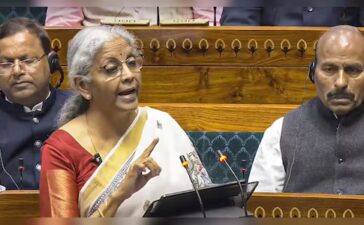A positive change from the previous text is that a timeframe of 2030 has been put into the text for achieving the thematic targets on water security, ecosystems restoration, health
Photo: Akshit Sangomla and Avantika Goswami / CSE
The draft text on the Global Goal on Adaptation (GGA), that is to be adopted at the closing plenary of COP28 in Dubai, is out. There are some hits and major misses in the document.
The principle of common but differentiated responsibilities and respective capabilities (CBDR-RC) still remains out of the text and so does the tying up of the means of implementation with the rest of the dimensional targets around risk assessments, planning, implementation, and monitoring and evaluation.
The text is still pretty weak overall on means of implementation, especially the obligations of developed countries to enhance adaptation finance to developing countries. However, in a major reprieve for developing country Parties, the paragraph on Article 2.1 c has been removed from the text.
Article 2.1 c refers to a vague alignment of global financial flows to keep them in line with low greenhouse gas emissions and climate resilient development. Developing country groups have always feared that it could be used to swap the focus from public finance coming from developed countries in the form of grants to private finance that would be geared for profit.
The Article has often been used by developed country Parties as a bargaining chip to arm twist developing country groups into agreeing on some aspects of the negotiations.
But the other paragraph that had been introduced into the text from December 11 on the commitment to close the adaptation finance gap has been changed from a commitment to seeking to close the gap which is weaker language.
There is reference to the closing of the adaptation finance gap in the text which was crucial for developing country groups.
One of the main contentions from developing country Blocs such as the African Group of Negotiators (AGN) was around a clear pathway of how means of implementation, including finance, for achievement of the many dimensional and thematic targets would be provided by developed countries to developing countries. But overt language around this is missing from the text.
There is language around the doubling of adaptation finance which is nothing new.
There is a vague reference to the Gobal Stock Take (GST) and New Collective Quantified Goal (NCQG). That is where countries have been asked to consider the outcomes of the Global Stocktake (GST) and the GGA framework in their deliberations on the NCQG. The latter is a new finance goal to replace the $100 billion goal from the Paris Agreement. It is to be adopted next year.
Another major and positive change from the previous text is that a timeframe of 2030 has been put into the text for achieving the thematic targets on water security, ecosystems restoration, health. This was also a demand by developing country groups, such as the AGN.
A new paragraph that recognises the challenges to implementing transformational adaptation for countries that have significant capacity constraints has also been introduced into the text.
Transformational adaptation has been something that has been concerning for some developing country groups throughout the eight Glasgow Sharm El-Sheikh (GlaSS) work programme workshops on the GGA in the past couple of years. This is mainly because of a lack of definition of what transformational adaptation exactly entails.
We are a voice to you; you have been a support to us. Together we build journalism that is independent, credible and fearless. You can further help us by making a donation. This will mean a lot for our ability to bring you news, perspectives and analysis from the ground so that we can make change together.
















